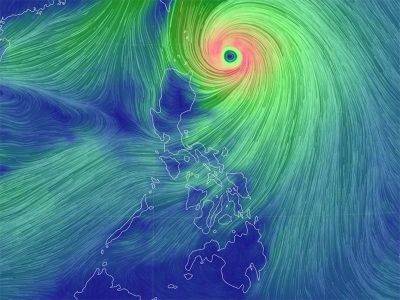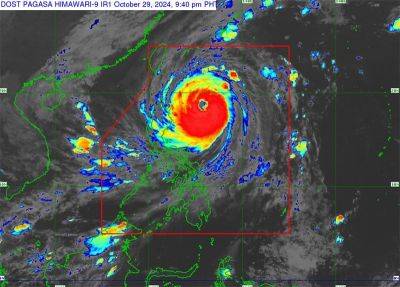Signal No. 3 up over Batanes, Babuyan Islands as 'Leon' strengthens
MANILA, Philippines — Signal No. 3 has been raised over Batanes and the eastern portion of Babuyan Islands as Typhoon Leon continued to intensify in the Philippine Sea.
As of 4 a.m. on Thursday, October 30, PAGASA said that Leo was found 395 kilometers east of Calayan, Cagayan.
Packing peak winds of 165 kilometers per hour (kph) near the center and gustiness of up to 205 kph, Leon is now moving west-northwest at 15 kph.
The following areas are under tropical cyclone wind signals:
Signal No. 3
Winds between 89 kph to 117 kph may be expected in at least 18 hours. Residents of areas under Signal No. 3 could experience moderate to significant impacts from strong winds.
Signal No. 2
Residents of areas under Signal No. 2 could experience minor to moderate impacts from strong winds, with winds between 62 kph and 88 kph expected within at least 24 hours.
Signal No. 1
Residents of areas under Signal No. 1 could experience minimal to minor impacts from strong winds, ranging from 39 to 61 kph.
PAGASA said that Signal No. 4 may be over Batanes and the Babuyan Islands, with the possibility of Signal No. 5 as well.
Gusty conditions are expected in the following areas due to Typhoon Leon:
The state weather bureau warned of dangerous storm surges of 2.0 to 3.0 meters in low-lying coastal areas of Batanes, Cagayan and the Babuyan Islands. This warning is in effect for the next 48 hours.
A gale warning has been raised over Northern Luzon and the eastern seaboards of Central and Southern Luzon due to strong winds and rough sea conditions brought by Typhoon Leon.
PAGASA advised mariners of dangerous sea conditions, warning that travel poses risks for smaller vessels, such as motorbancas, in the following areas:
Up to 12 meters: The seaboards of Batanes
PAGASA said that Leon is expected to gain strength, nearing super typhoon status as it tracks toward Taiwan and comes close to Batanes.
Leon is forecast to track northwestward, bringing it closer to the Philippine territory, where it may make landfall along Taiwan’s eastern coast on Wednesday afternoon.
It is anticipated to turn north-northwest, moving over the Taiwan Strait toward the East China Sea, and may exit the







